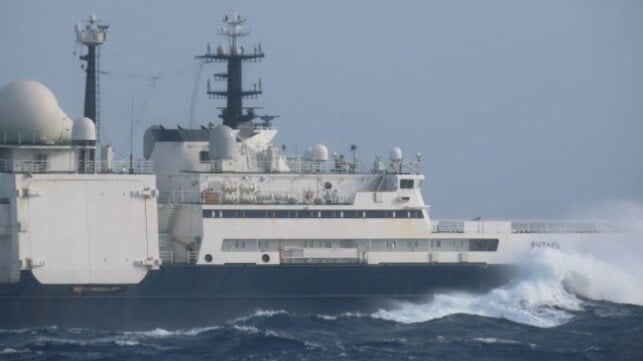Portugal's Small Navy Tracks Rising Level of Russian Activity in Atlantic

Portugal's military is warning of increased Russian activity levels off Europe's southwestern coastline, which require diligent monitoring and tracking.
“Our response to this is to follow them, control them, and keep them under constant pressure with our constant presence,” Naval Chief of Staff Admiral Henrique Gouveia e Melo told Portuguese media last week in Lisbon.
Portugal reports an active pattern of transits through Portuguese waters - not unusual or high-risk, but a sign that Russia's navy is operating at an elevated operational tempo. Russian vessels have to pass Portugal in order to reach the Mediterranean and regularly pass through Portugal's area of NATO monitoring responsibility in the Atlantic.
Recent transits include two frigates, one corvette, two oilers, three research vessels, and one signals intelligence spying vessel. NATO member nations believe that Russia's civilian research vessels often serve a military purpose, mapping subsea infrastructure like fiber-optic cables for possible hybrid warfare activities. They are also widely believed to carry military-grade communications equipment.
Portugal's navy says that it has carried out more than 120 missions to follow and observe Russian forces in Portuguese waters. The number has increased every year: there were 14 missions in 2022, 46 in 2023 and 66 so far in 2024.
These missions are putting a lot of mileage on the Portuguese Navy's surface fleet, which has to deploy multiple vessels at a time to track simultaneous Russian transits. During one recent sortie, eight Portuguese Navy vessels racked up a combined 15 ship-days of deployment time. Multiplying this workload by five dozen missions per year means Portugal's small navy is running a high rate of vessel utilization for the sole purpose of monitoring Russian transits, in addition to the service's other naval missions and exercises.
